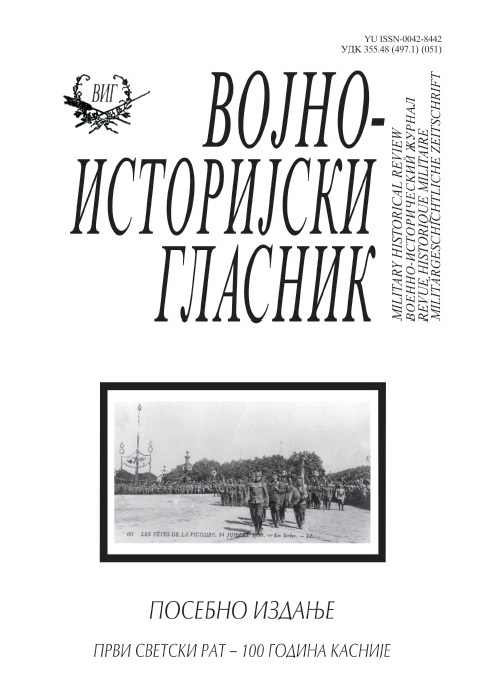СЛОМ АУСТРОУГАРСКЕ УПРАВЕ И ФОРМИРАЊЕ НАРОДНИХ ВЛАСТИ У БОСНИ И ХЕРЦЕГОВИНИ 1918. ГОДИНЕ
THE COLLAPSE OF THE AUSTRO‐HUNGARIAN ADMINISTRATION AND THE FORMING OF THE NATIONAL AUTHORITIES IN BOSNIA AND HERZEGOVINA IN 1918
Author(s): Borivoje MiloševićSubject(s): Military history
Published by: Institut za strategijska istraživanja
Keywords: Bosnia and Herzegovina; Austro‐Hungary; First world war; Kingdom of Serbs; Croats and Slovenians; Union 1918; National Council of Bosnia and Herzegovina
Summary/Abstract: The National Council for Bosnia and Herzegovina started work in very complex social conditions at the end of 1918. The provinces were economically exhausted by the years of war, and parts of the Austro‐Hungarian units, that had withdrawn from the front line, turned into dangerous armed gangs. At the beginning of November 1918, the National Government was formed in Sa‐rajevo. Тhe Prime Minister was Atanasije Šola, former member of Bosnian parliament. As the National Guard was unable to secure order and peace, this role was entrusted to the Serbian army, which entered the Bosnia and Herze‐govina in early November 1918. Historical sources indicate that the Serbian army was welcomed with enthusiasm and great optimism of all citizens regar‐dless of their national or confessional affiliation. The capital city was liberated on November 6th 1918. In some parts of the country, peasants attacked and robbed property of Muslim landowners. Мost of Bosnia and Herzegovina's regions declared direct union with Serbia during November 1918. For example, Banja Luka National Council worked completely autonomously in relation to the go‐vernment in Sarajevo.
Journal: Vojnoistorijski glasnik
- Issue Year: 2019
- Issue No: poseban
- Page Range: 180-206
- Page Count: 27
- Language: Serbian

